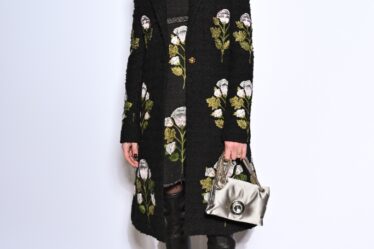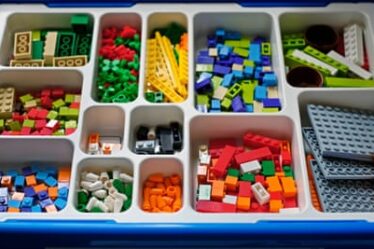
Here’s how to build a wardrobe full of staples you’ll wear again and again for years to come.
(Embroidery illustration: Ashley Wong; Photography: Erik Putz)
Fashion is a major culprit when it comes to carbon emissions. While the best thing you can do for the planet is to reduce your consumption, your clothes will need to be replaced eventually—no matter how gentle you are. Below, four tips to keep in mind the next time you hit the store to shop smarter.
1. Find what’s missing
Before heading to the store, slow-fashion influencer Alyssa Beltempo says it’s important to identify the holes in your wardrobe, rather than purchasing more of what you already have. Then, create a shopping list with what you actually need, but also what you want. “It’s okay to want things; it’s not a bad thing!” she notes. Longevity is also important: For trendier pieces, ask yourself whether it’s something you love enough to commit to wearing once everyone else moves on.
2. Consider your reality
One common mistake is to make purchase decisions based on how a piece looks alone, rather than how it works with what you already own and how practical it is for your lifestyle. Beltempo recommends visualizing how the item might help stretch the wear of pieces already hanging in your closet. “Ask yourself, ‘Can I create at least three to five new outfits with that one piece?’” she says. Budget is also crucial, and it’s worth saving up to buy items that reflect your style and values.
3. Bet on quality
The first thing Beltempo looks at is fabric. Natural fibres, like cotton, linen and wool, are ideal, but fabric blends are more common. Beltempo suggests looking for a ratio of 75 percent or higher of one material in the overall blend for higher quality. Examine the garment’s construction: Does it feel sturdy? Are the pockets, zippers and buttons reinforced? Is the hardware solid? Are the inside seams neat? Those are all signs of a good-quality garment that will stand the test of time.
4. Buy second-hand
Online resale platforms, including Facebook Marketplace, Depop and Poshmark, are great resources for finding stylish pre-loved pieces. Unlike thrift stores, they let you filter by size and style. “Take advantage of the search functions to narrow it down to the colour, the fabric and anything else you’re looking for,” says Beltempo. She also recommends sticking to your shopping list: “It’s easy to end up overshopping, and overconsumption is still overconsumption even if it’s second-hand.”



